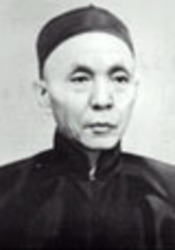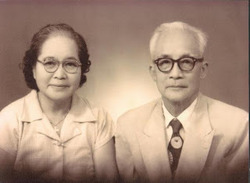Before we look into the history of indigenous missions from China, we need some clarifications on the concept of “China” or “Chinese” as to what it denotes; otherwise, we may easily end up with broad slogans and vagueness. It must be clear from whom and from where the mission comes and to whom or where it reaches. There are three basic concepts which we need to distinguish: missions from China (福音出中國), missions from Chinese (福音出中華), and missions from Central China (福音出中原).
When we say “missions from/out of China,” we are talking about gospel missions that comes from within, and out of, the geopolitical boundary of China (be it Mainland China, Taiwan, Hong Kong or Macao). It means that citizens under Chinese sovereignty travel out of this geopolitical region to preach the gospel regardless of the target groupbe it Chinese or some other ethnic group. This missions concept emphasizes the nationality, hence the geopolitical sphere, of the missionaries as well as the mission field. For example, Chinese missionaries from Mainland China travel aboard to engage in mission work.
“Missions from Chinese” focuses on the Chinese culture of ethnic Chinese who, regardless of their citizenship, take the gospel to other people, be they ethnic Chinese or otherwise. The emphasis is on the cultural and anthropological aspect of the missionary and his or her work. It can be a Chinese (Han) in Mainland China who engages in mission work among ethnic minority people in China or an ethnic Chinese from Indonesia who evangelizes Chinese or non-Chinese in Russia.
“Missions from/out of Central China” denotes mission work that originated in the geographic area of Central China where, before 1950, ninety percent of the Chinese population (almost all Han Chinese) lived. It is strictly a geohistorical framework. It could be Chinese or foreign missionaries who came from Central-coastal China and established mission work in peripheral areas of China, such as Xinjiang or Yunnan, with the target group being Han Chinese or minority groups, such as Tibetans or Mongolians. Before the 1930s, very few Han Chinese had traveled beyond Central China into the peripheral regions; it was as if those regions were as foreign as a country abroad. It was not until the mid-1930s, when a large number of Han Chinese, displaced by war and natural disasters, began to migrant to those places, that they began to be known to the ordinary Han Chinese. Border regions soon became new and exotic mission fields for Christians from Central-coastal China, even though these regions were politically already part of sovereign China.
Historical Review

Rev. Uong Nai-siong; mengleiwong .blogspot.hk
Methodist Minister Reverend Uong Nai-siong (黄乃棠) from Fuzhou, Fujian, made one of the first attempts at taking the gospel from/out of China. In 1901, he brought about 1,000 people from China to Sarawak (now East Malaysia) and built a church as well as Christian-based communities there. He and his followers also established a mission to both Chinese and other ethnic groups. Today, the church that he established is the largest Christian church in East Malaysia. Reverend Uong was the first Chinese missionary who left China (during the Qing Dynasty) and built Christian communities outside of sovereign China as Sarawak, at that time, was under the White Rajah, the Brooke Dynasty.

Rev. Zhu Xin-wen; stevechukw.blogspot.hk/
One of the first Chinese missionaries who came out of China to preach the gospel exclusively to non-Chinese was Reverend Zhu Xinwen (朱醒魂) of the Chinese Foreign Missionary Union (CFMU). He began to build churches among the Vietnamese in Colon of Saigon in Vietnam (1921) and later among Indonesians in Indonesia in 1928. The churches he established in Colon are still operating today. The churches he established in Indonesia are now known as the Badan Kerja Samatiga Sinode Ex CFMU.
From the 1930s to the 1940s, there were several well-known missions out of Central China to Xinjiang, which captured the attention of some advocates of the Back to Jerusalem (BTJ) movement who have attempted to link the current BTJ with some of these mission legacies. The following is a brief summary of some of these missions.
Chinese Christian Evangelistic Band (中華基督徒佈道會). This was an indigenous Christian mission group based in Shanghai with supporting agencies such as the North China Theological Seminary (華北神學院). In 1950, it had close to one hundred coworkers in many border regions such as Xinjiang, Qinghai and Yunnan. It had sent a team of missionaries to Xinjiang to do extensive research for three years. They did feasibility studies for a mission and in 1950 came up with a clear mission objective for Xinjiang: targeting the Uighurs as the main people group they would evangelize. They had also come up with some strategies: missionaries must have Uighur language studies, and medical/ agricultural work would be the platform allowing them to evangelize. However, this mission group was disbanded when the new Communist regime came into power.
Northwest Spiritual Band (西北靈工團). Reverend Zhang Guquan of North China Theological Seminary established this band in the early 1940s modeling it after the Jesus Family as a faith mission where all members shared things in common. There was no administrative structure; it was a prototype of the early Christian community. Most of its members were from Shandong with some from Henan, Shaanxi and Shanghai. This band had no clear objective in mind, no map and no funding, but they kept traveling toward the northwest region and most ended in Xinjiang. At its height, it had about forty members; many joined and left. Along the way they targeted Han Chinese for evangelism. No one learned the Uighur language and no attempt was ever made to evangelize the Uighur. In 1950, this group was disbanded by the new Xinjiang government. Reverend Zhang was arrested and later died and was buried in Xinjiang. Most of the remaining members stayed and died in Xinjiang.
Preaching the Gospel to All Places Band (遍傳福音團, translated as the BTJ Band by Helen Bailey). In the early 1940s, Reverend Mark Ma challenged some students, at a China Inland Mission (CIM) Bible School in Shaanxi, to mission work. After fasting and prayer, some students felt moved to preach the gospel from Northwest China, through Central Asia and on to Mount Zion in Jerusalem as the penultima of the Second Coming of Christ. They formed a band beginning with a handful and eventually numbered about twenty. They went to Xinjiang and attached themselves mostly to the local Han Chinese church established by CNEC (see following group). There was no attempt to evangelize the Uighurs. Their mission concept was to travel through these regions passing out gospel tracts along the way. A couple of their members arrived in Kashgar in 1949 which was the farthest they reached. In 1950, the new Xinjiang government also disbanded this group. Reverend Mark Ma and about half the members had left this band before the Communist took over Xinjiang. Rev. Ma had settled in Chongqing and never returned to Xinjiang. About half of the remaining members of this band shared the fate as the members of the Northwest Spiritual Band mentioned above.
Christian Native Evangelistic Crusade/Chinese National Evangelism Commission (CNEC) (中華傳道会). 1n 1945, Paul and Cora Li, missionaries of CNEC in Yunnan, applied to be relocated to Xinjiang to begin mission work there. In 1945, they built the first church in Dihua (now Urumqi) Xinjiang with trilingual services: Chinese, Uighur and Russian. In 1946 they baptized more than twenty-five people. Paul Li was later ordained, perhaps as the first Chinese minister in Xinjiang, and more coworkers from the interior of China joined them. By 1950, CNEC had already established seven churches in Xinjiang. It also ran a small Bible school, and its students later established more churches there. All the churches and the school were forced to close down in 1956 and all the CNEC workers were jailed; later they all died in Xinjiang. All of the churches established are still operating today.
Paul and Cora Li; CNEC Newsletter, September 1947 (above left)
Dihua Church; CNEC Newsletter, March 1950 (above right)
Reflections
For more than a century there have been many indigenous mission movements experimenting with mission endeavors from China, from Chinese, as well as from Central-costal China. Their experiences and lessons are vital for us as we formulate our mission strategies within our current context so that we do not “reinvent the wheel” nor repeat some broad, vague mission slogans. The legacies of these forerunners may easily become legends—if not mythologized. The facts are that they tried their best within their limited theological and missiological resources to carry out the task of evangelism. Most laid their life upon the altar for God and the sake of the gospel, and they established solid spiritual foundations for us to carry on the work of missions. To continue their legacy, we have no excuse for not doing a better work than they did. Since we have more sophisticated tools, as well as many more resources at our disposal, we must establish better defined objectives, clearer strategies and more in-depth theological foundations than our forerunners.
Kim-Kwong Chan
The Rev. Kim-Kwong Chan, PhD, DTh, is the Executive Secretary of the Hong Kong Christian Council.View Full Bio
